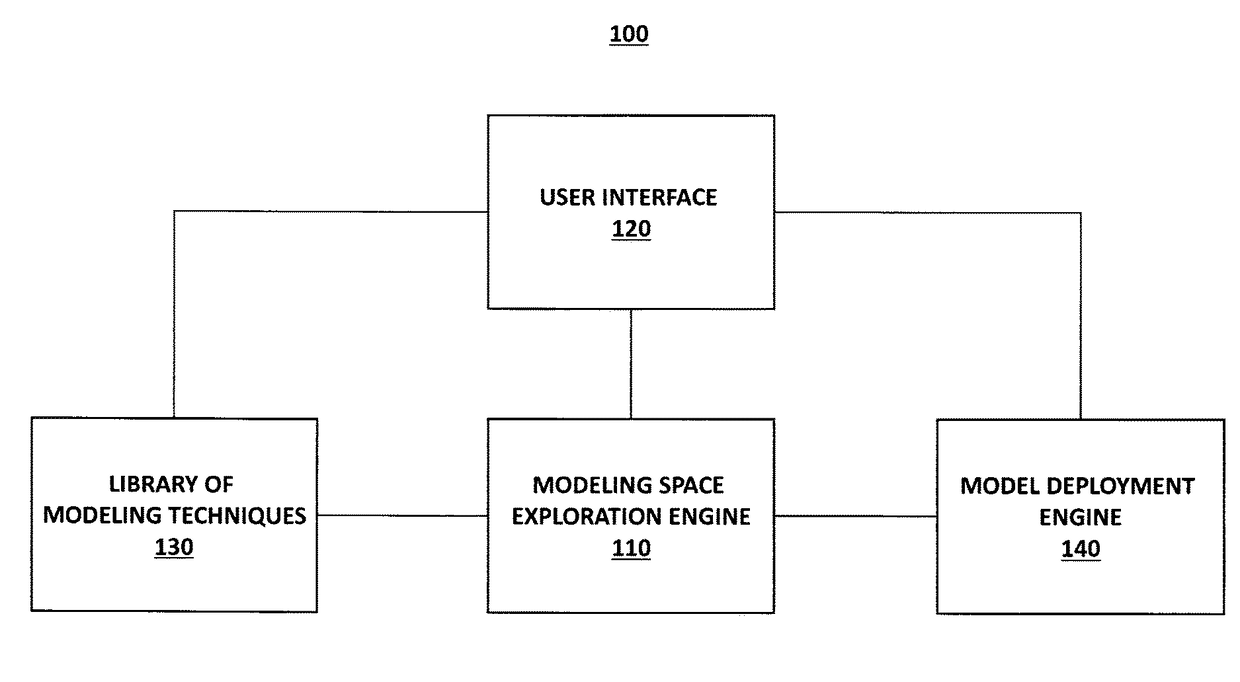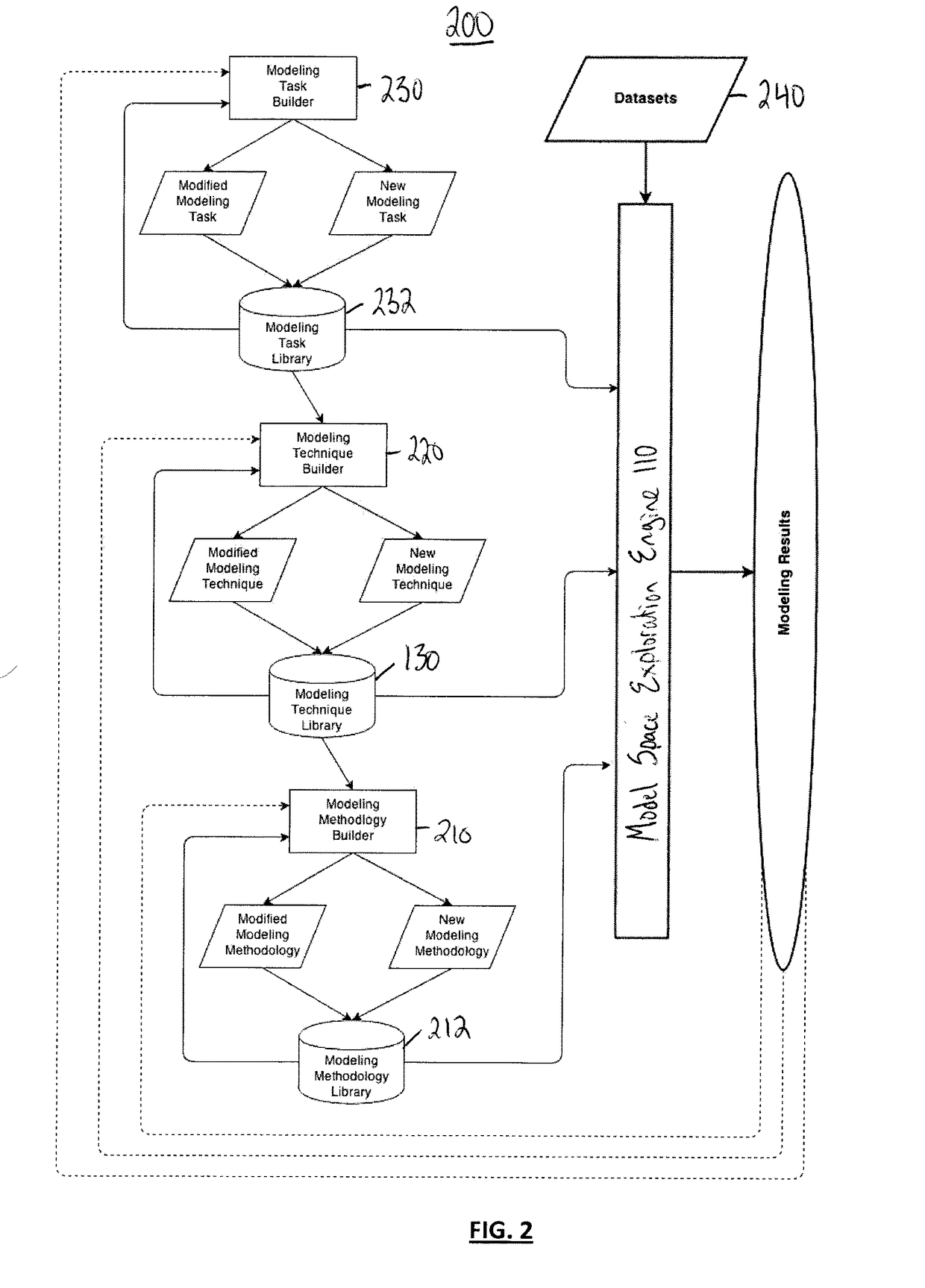Systems for time-series predictive data analytics, and related methods and apparatus
a predictive data and time-series technology, applied in computing models, multi-programming arrangements, instruments, etc., can solve the problems of large and complex space of potential predictive modeling solutions for a prediction problem, artisanal approach to generating predictive models is generally expensive and time-consuming, and achieves less computational resources, reduces opaqueness and/or complexity of a first-order, and reduces model accuracy
- Summary
- Abstract
- Description
- Claims
- Application Information
AI Technical Summary
Benefits of technology
Problems solved by technology
Method used
Image
Examples
Embodiment Construction
Overview of Predictive Modeling System
[0100]Referring to FIG. 1, in some embodiments a predictive modeling system 100 includes a predictive modeling exploration engine 110, a user interface 120, a library 130 of predictive modeling techniques, and a predictive model deployment engine 140. The exploration engine 110 may implement a search technique (or “modeling methodology”) for efficiently exploring the predictive modeling search space (e.g., potential combinations of pre-processing steps, modeling algorithms, and post-processing steps) to generate a predictive modeling solution suitable for a specified prediction problem. The search technique may include an initial evaluation of which predictive modeling techniques are likely to provide suitable solutions for the prediction problem. In some embodiments, the search technique includes an incremental evaluation of the search space (e.g., using increasing fractions of a dataset), and a consistent comparison of the suitability of diffe...
PUM
 Login to View More
Login to View More Abstract
Description
Claims
Application Information
 Login to View More
Login to View More - R&D
- Intellectual Property
- Life Sciences
- Materials
- Tech Scout
- Unparalleled Data Quality
- Higher Quality Content
- 60% Fewer Hallucinations
Browse by: Latest US Patents, China's latest patents, Technical Efficacy Thesaurus, Application Domain, Technology Topic, Popular Technical Reports.
© 2025 PatSnap. All rights reserved.Legal|Privacy policy|Modern Slavery Act Transparency Statement|Sitemap|About US| Contact US: help@patsnap.com



